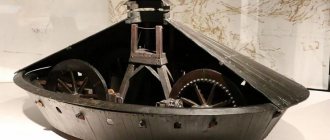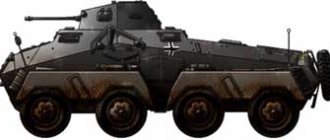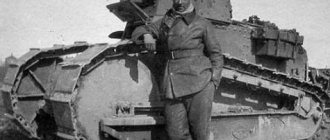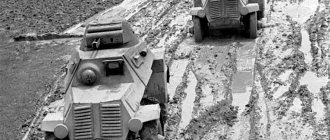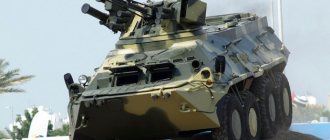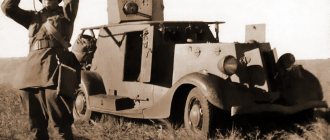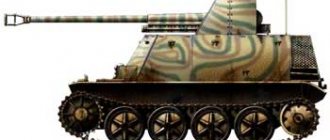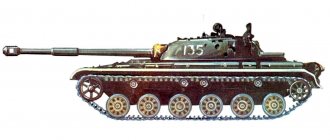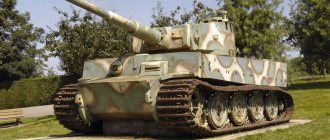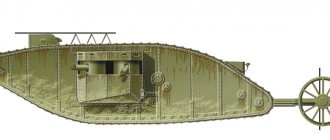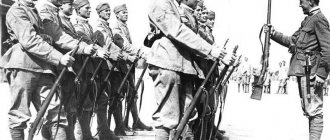This term has other meanings, see BTR.
| |||||||||||
| BTR-50PU | |||||||||||
| Classification | Command and staff vehicle | ||||||||||
| Combat weight, t | 14,3 | ||||||||||
| Crew, people | 10 | ||||||||||
| Story | |||||||||||
| Developer | KB ChTZ | ||||||||||
| Manufacturer | |||||||||||
| Years of development | 1958 | ||||||||||
| Years of production | since 1958 | ||||||||||
| Years of use | since 1958 | ||||||||||
| Basic operators | |||||||||||
| Dimensions | |||||||||||
| Case length, mm | 7070 | ||||||||||
| Case width, mm | 3140 | ||||||||||
| Height, mm | 2050 | ||||||||||
| Ground clearance, mm | 370..400 | ||||||||||
| Booking | |||||||||||
| Armor type | bulletproof | ||||||||||
| Body forehead, mm/deg. | 8..10 | ||||||||||
| Mobility | |||||||||||
| engine's type | AT 6
| ||||||||||
| Engine power, l. With. | 240 | ||||||||||
| Highway speed, km/h | 44,6 | ||||||||||
| Speed over rough terrain, km/h | 10.2 afloat | ||||||||||
| Cruising range on the highway, km | 240..260 | ||||||||||
| Cruising range over rough terrain, km | 180..210 | ||||||||||
| Specific power, l. s./t | 16,7 | ||||||||||
| Suspension type | individual torsion bar | ||||||||||
| Specific ground pressure, kg/cm² | 0,5 | ||||||||||
| Climbability, degrees. | 38 | ||||||||||
| Wall to be overcome, m | 1,1 | ||||||||||
| Ditch to be overcome, m | 2,8 | ||||||||||
| Fordability, m | floats | ||||||||||
| BTR-50PU on Wikimedia Commons | |||||||||||
BTR-50PU
(GBTU index -
Object 750K
) - Soviet command and staff vehicle. Developed on the basis of the BTR-50 armored personnel carrier. Serial production was established at the Volgograd Tractor Plant and the Chelyabinsk Tractor Plant in 1958.
Description of design
Armored hull and turret
The armored body is divided into three compartments. In the front part there is a control compartment, which houses the driver, vehicle commander and navigator. In the upper right part of the front plate there is a navigator's niche. In the middle part there is a headquarters compartment. Unlike the base vehicle, there are no observation hatches on the side panels. There is a table in the headquarters office for working with documents. The rear part of the roof of the headquarters compartment does not have hinged covers and is made solid to secure the antenna mast in a stowed position during the march. The engine[1] is installed at the rear.
Surveillance and communication devices
To monitor the terrain, the navigator's position is equipped with three TPN-B prismatic devices. On the roof of the headquarters compartment there is a 360° rotating turret with a TPKU-2B surveillance device installed. Behind the turret there are two landing hatches with a porthole, thanks to which work in the compartment during the daytime is possible without additional lighting. The communications center is located in the headquarters office. Communication is provided by a set of radio stations R-112, R-113 and R-105, a two-channel radio relay station R-403BM, a radio receiver R-311, and a field switch P-193A. Additionally, the communication kit includes four reels of two-wire telephone cables, each 600 meters long, and four telephone sets. The machine is standardly equipped with three four-meter, one 11-meter and one 10-meter antennas. Internal communication between the crew is carried out using two sets of R-120 tank intercoms. The radio stations operate using the AB-1-P/30 power supply unit. Terrain orientation is carried out using DP path sensors, KP-2M1 course plotter and KM-2 gyro direction indicator[2].
Light armored vehicles 1945–1965
After World War II, the importance of armored vehicles increased. The reason is simple: “armored vehicles” protected the crews and paratroopers from the damaging factors of a nuclear explosion and its consequences. Therefore, motorized infantry and other types of troops could move behind the tanks in areas that had been subjected to a nuclear attack.
Soviet armored personnel carriers
The first Soviet armored personnel carrier BTR-152 (1947) retained the layout of the BA-10/11 , and its basis was the ZiS-151 . The vehicle turned out to be in demand; 12,500 of them were built in the USSR, including versions of a self-propelled anti-aircraft gun, a mobile command post and a mobile radio station. The next one (1952) was the tracked BTR-50, which could also float. However, the high cost of the tracked propulsion system led to the fact that the BTR-60 was made wheeled. Unlike the BTR-152, the “sixty” did not have a civilian prototype. This made the work of designers easier - they did not necessarily need to use ready-made components and assemblies. The four-axle BTR-60 turned out to be quite successful, and subsequently all domestic armored personnel carriers were built according to this design.
BTR-152. USSR.1947–1952
relatively lightweight BTR-40 based on the GAZ-53 . The military did not like the fact that it accommodates only 8 soldiers - less than a motorized infantry squad (11 people). However, such vehicles were suitable for reconnaissance, patrol duty, and guarding truck convoys. In 1954, on the basis of the BTR-40, the development of a specialized armored reconnaissance and patrol vehicle (BRDM-1) , and in 1962 the BRDM-2 , which was similar to the BTR-60, only it had two axles instead of four .
In 1954, the MT-LB (multi-purpose light armored tractor) . Since the vehicle ultimately became not only an artillery towing vehicle and a cargo carrier, but also a platform for various types of weapons and special equipment, the word “transporter” began to be used instead of the word “tractor” in the name . Only in the USSR/RF, on the basis of MTLB, many vehicles for various purposes were created - from firefighters to anti-aircraft missile systems. To date, this armored transporter is in service with almost two dozen countries.
BTR-60. THE USSR. 1960–1987
BTR-50. THE USSR. 1954–1970
BRDM-1. THE USSR. 1957–1966
BRDM-2. THE USSR. 1963–1989
Multi-purpose light armored tractor (MT-LB). THE USSR. 1964–present
US armored personnel carrier
Half-track armored personnel carriers were a compromise between maneuverability and price. In 1944, the United States opted for a purely tracked design and began developing such transporters. However, the first model - M44 - turned out to be too heavy (more than 23 tons) and bulky, and the military did not like the following projects either.
The development program for armored personnel carriers for the US Army stalled for a long time. Only in 1957 was a successful prototype of the future M113 . The army wanted to transport the armored personnel carrier on airplanes, so its armor was made of aluminum to reduce weight. The armored hull made of flat sheets was technologically advanced and cheap. The M113 turned out to be in demand - a total of 85,000 of these vehicles were built, including modifications for various purposes. This armored personnel carrier is still in service in many countries, including in its homeland, and has participated in many armed conflicts. During the Vietnam War, the M113 received the loud nickname “Green Dragon,” but it did not catch on, and American infantrymen simply call their main vehicle a truck (track).
M113 armored personnel carrier. USA. 1960–1992
Modifications
- BTR-50PU
- basic modification produced at the Chelyabinsk Tractor Plant
BTR-50PUM
- modernized version of the BTR-50PU with updated equipment [2]
BTR-50PUM1
- further modernization with modified equipment. Entered service in 1972[2]
- a version produced at the Volgograd Tractor Plant, differed from the BTR-50PU in minor changes in the composition of the equipment[2]
is a conversion transport vehicle produced by 560 BTRZ.
Notes
- A. V. Karpenko
, Review of domestic armored vehicles (1905-1995), p. 77 - ↑ 1 2 3 4 M. Baryatinsky
History of the creation of the BTR-50 armored personnel carrier // Armored Collection. - Moscow: “Modelist-constructor”, 2004. - No. 1. - P. 36-38. - Lensky A. G., Tsybin M. M.
Soviet ground forces in the last year of the USSR. - St. Petersburg: B&K, 2001. - P. 25, 26. - 294 p. — ISBN 5-93414-063-9. - ↑ 12
[armstrade.sipri.org/armstrade/page/trade_register.php Stockholm Internation Peace Research Institute – Arms Transfers Database]
Performance characteristics of the BTR-50
Crew, people: 2 Troops, people: 20 Layout: rear-engine Years of production: 1954—1970 Number of produced, pcs.: up to 6500
Weight of BTR-50
— 14.2 tons
Dimensions of BTR-50
— Body length, mm: 7070 — Body width, mm: 3140 — Height, mm: 2030 — Ground clearance, mm: 270
Armor BTR-50
— Armor type: rolled homogeneous steel of high hardness — Hull front, mm/deg.: 10–13 — Hull side, mm/deg.: 8–10 — Hull rear, mm/deg.: 6
Armament of the BTR-50
— Machine guns: 1 × 7.62 mm SGMB machine gun (later PKMB)
Engine BTR-50
— Engine type: V-6PVG — Engine power, l. p.: 240
Speed BTR-50
— Highway speed, km/h: 44.6 — Cross-country speed, km/h: 10.2 (afloat)
— Cruising range on the highway, km: 380–420 — Cruising range over rough terrain, km: 80–140 (afloat) — Specific power, l. s./t: 16.7 — Suspension type: individual torsion bar — Specific ground pressure, kg/cm²: 0.5 — Climbable grade, degrees: 38° — Climbable wall, m: 1.1 — Climbable ditch, m : 2.8 — Fordability, m: floats
Literature
- A.V. Karpenko.
Review of domestic armored vehicles (1905-1995). - St. Petersburg: “Nevsky Bastion”, 1996. - 10,000 copies. - M. Baryatinsky
History of the creation of the BTR-50 armored personnel carrier // Armored collection. - Moscow: “Modelist-constructor”, 2004. - No. 1. - P. 36-38. - BTR-50PU command and control vehicle. Addition to the manual on the material part and operation of armored personnel carriers BTR-50P and BTR-50PA. - M.: Military Publishing House of the USSR Ministry of Defense, 1961. - 256 p.
T-44 · T-54 · T-55 · Object 416
·
Object 141
·
Object 139
·
Object 907
·
Object 140
·
Object 142
·
Object 430
·
Object 435
·
Object 167
· T-62 · T-62A ·
Object 920
· T-64
[/td]
| Medium tanks | |
| Heavy tanks | IS-3 IS-4 IS-7 · T-10 · |
| Missile tanks | IT-1 · Item 64992 · |
| Flamethrower tanks | OT-54 · Object 483 TO-55 |
| BMPT | Object 781 · |
| Main battle tanks | T-62B · T-64A · T-64BV · |
| ATGM combat vehicles | 2P27 "Bumblebee" · 2P32 "Phalanx" · 9P19 "Eye" · 9P110 "Malyutka" · 9P122 "Malyutka-M" · 9P124 "Phalanga-M" · 9P133 "Malyutka-P" · 9P137 "Flute" · 9P148 "Konkurs" · 9P149 "Sturm-S" · 9P157 "Chrysanthemum-S" · 9P161 "Kornet-S" · 9P162 "Kornet-T" |
| Combat reconnaissance vehicles | BRDM-1 Object 760 (“hover tank”) · |
| Flamethrower combat vehicles | BMO-1 · BMO-T |
| Armored personnel carriers | K-75 · BTR-40 · |
| Armored vehicles | Ural-4320-09-31 Ural-E4320D-31 Ural-E5323D GAZ-39344 · |
ASU-76
·
K-73
· SU-100P ·
SU-100M
· ASU-57 ·
BSU-11-57F
·
Object 574
· ASU-85 · SU-152
"Taran"
·
2S14 "Sting-S"
·
2S15 "Norov"
·
" Hermes"
· 2S25 "Sprut-SD" ·
2S28 "Sprut-K"
[/td]
| Anti-tank | |
| Self-propelled howitzers and mortars | SU-152G · |
| Coastal | A-222 "Bereg" |
| TZM | 9T451 "Grad-1" · TZM "Grad-VD" · TZM-T “Solntsepek” |
| SPU | SPU 2P2 "Mars" · SPU 2P4 "Filin" · SPU 2P5 "Korshun" · SPU 2P16 "Luna" |
ZSU-37-2 "Yenisei"
·
Object 130
[/td]
| 37 mm | |
| 30 mm | 2S6 "Tunguska" · 96K6 "Pantsir-S1" · ZPRK "Roman" · |
| 23 mm | ZSU-23-4 "Shilka" |
| Strela-10 | BM 9A35 SAM 9K35 "Strela-10-SV" |
| Pine | BM SAM "Sosna" |
| Wasp | BM 9A33B SAM 9K33 “Osa” |
| Thor | BM 9A330 SAM 9K330 “Tor” |
| Cube | SURN 1S91 SAM 2K12 "Kub" · SPU 2P25 SAM 2K12 "Kub" · SOU 9A38 SAM 2K12M4 "Kub-M4" |
| Beech | KP 9S470 SAM 9K37 "Buk" · SOC 9S18 SAM 9K37 "Buk" · SOU 9A310 SAM 9K37 "Buk" · PZU 9A39 SAM 9K37 "Buk" · RPN 9S36 SAM 9K317 "Buk-M2" |
| Circle | SOC 1S12 SAM 2K11 "Krug" · SNR 1S32 SAM 2K11 "Krug" · SPU 2P24 SAM 2K11 "Krug" |
| S-300V | KP 9S457 air defense system 9K81 "Antey-300" · radar 9S15 air defense system 9K81 "Antey-300" · radar 9S19 air defense system 9K81 "Antey-300" · MSNR 9С32 air defense system 9K81 "Antey-300" · PU 9А82 air defense system 9K81 "Antey-300" · PU 9A83 ZRS 9K81 "Antey-300" · ROM 9A84 ZRS 9K81 "Antey-300" · ROM 9A85 ZRS 9K81 "Antey-300" |
| Cranes | KT-15 · SPK-5 · SPK-12G |
| BIS | UR-67 · UR-77 · UR-88 · |
| IMR | IMR-1 IMR-2 IMR-3 IMR-3M "Klin-1" AZM · |
| RHM | BRDM-2РХБ · РХМ · РХМ-2 · RKhM-3 · РХМ-4 · РХМ-5 · РХМ-6 · РХМ-7 |
| BREM | BREM-1 BREM-2 BREM-3 BREM-80U BREM-L BREM-D BREM-K RM-G |
| MTU | MTU · MTU-20 · MTU-55 · MTU-72 · MTU-90 |
| ICC | MTP-1 · MTP-2 · MTP-3 · MTP-A5 |
| Other | SPU-117 · IRM · IPR · VTS · KDHR-1N · BTZ-3 · LKM-1 · LKM-3 · P-256G · RPM-2 · KhTV-64 · SPM |
| PRP and PPU | PRP-3 "Val" · PRP-4 "Nard" · PRP-4M "Deuterium" · PPRU-1 "Gadfly-M-SV" · 9S482 (PU-12) · 9S482М6 (PU-12М6) · 9S737 "Rank" · 9S737M "Rangir-M" · 15Y56 (MBP) · "Palantin-P" |
| KSAUO | 1B13 1B14 1B15 1B16 Object 940 · 1В18 "Klen-1" · 1В19 "Klen-2" · 1В117 · 1В118 · 1В119 "Rheostat" · 1В152 · 1В157 · 1В21 · 1В22 · 1В23 · 1В24 · 1В25 · 1В31 |
| Radar | 1RL232 “Leopard” · SNAR-15 "Selenite" · 1RL239 “Lynx” · 1Л219 “Zoo” |
| electronic warfare | 1L21 (SPR-1) 1L29 (SPR-2) |
| 1K11 "Stiletto" · |
Promising, experimental, or samples that did not go into mass production were identified
In the image and likeness of a floating tank
During the formation of tactical and technical requirements for amphibious combat vehicles in the post-war USSR, the parallel creation of two models on the same base was envisaged - a tank and an armored personnel carrier. The development of the PT-76 amphibious tank was carried out very actively and with positive results. A related armored personnel carrier, initially designated “Object 750,” also promised to become a very successful vehicle. It was put into service as the BTR-50P
.
Maximum possible unification
According to the joint resolution of the Council of Ministers of the USSR and the Central Committee of the CPSU of August 15, 1949, the Ministry of Transport Engineering (MTrM), the Chelyabinsk Kirov Plant (ChKZ) and the designer Zh.Ya. Kotin were required to design and manufacture one prototype of an armored personnel carrier, which received the code “Object 750”. The technical design was required to be submitted for approval by mid-November 1949, and factory tests were supposed to be carried out by June 25, 1950.
Already on November 2, 1949, the technical project developed by ChKZ together with VNII-100 was presented to the ministry, and on November 19 the document was sent to the Council of Ministers.
BTR-50P of the 4th Guards Kantemirovskaya Tank Division in a training attack. The installation of the SGMB machine gun is clearly visible
After the PT-76 tank successfully passed state tests, there was complete confidence that the armored personnel carrier would be as successful as its brother with a gun. According to the requirements of the task, the tank and the armored personnel carrier at its base had to have the highest possible unification. “Object 750” was supposed to provide transportation of 20 paratroopers in full combat gear or 2000 kg of cargo.
As a load, the armored personnel carrier was supposed to transport weapons on land and afloat (guns with a caliber of up to 85 mm, recoilless rifles, mortars), ammunition for it, a gun crew or a GAZ-67B (GAZ-69) vehicle and seven people. The most difficult thing was the creation of a loading device, which was offered in two versions: an electrically driven crane unit and an engine-driven winch for loading equipment on folding ramps.
In April 1950, the first prototype of the Object 750 was produced, after which factory tests began. In less than three months, the car successfully covered 1,500 km. Since the test results were positive, they decided to build two samples at once for state tests, which were ready with some delay - not in July, but in August.
In pursuance of the order of the Council of Ministers of the USSR and the order of the Minister of War dated August 15, 1950, a commission consisting of the chairman, Colonel General of Tank Forces P.P. Poluboyarov, Deputy Chairman, Lieutenant General of the Engineering and Technical Service Zh.Ya. Kotin and engineer-colonel M.P. Konoplev, members of the commission from the Main Armored Directorate (GBTU), engineer-colonel G.V. Shpoter and engineer-lieutenant colonel M.G. Redkin, members of the commission from MTRM engineer-colonel P.K. Voroshilov and engineer A.S. Okuneva tested two tracked amphibious armored personnel carriers produced by ChKZ. The tests were carried out from September 4 to September 27, 1950 in the area of the city of Brovary, Kyiv region, according to a program approved by Deputy Minister of Defense Marshal V.D. Sokolovsky and Minister of Transport Engineering Yu.E. Maksarev.
On the way to the series
The overland run was carried out along country roads between the Desna and Dnieper rivers and in the Kyiv region. Afloat tests were carried out on the Desna and Dnieper rivers and on Lake Velikoye. During testing, armored personnel carriers covered 1,582 and 1,642 km, including more than 270 km over water each.
The commission noted that, despite the absence of design defects, the armored personnel carrier did not withstand state tests for a guaranteed mileage of 1,500 km: the road wheels and tracked tracks failed, and the unsatisfactory accuracy of the DShK machine gun was discovered. Serious disadvantages included strong engine exhaust noise, unreliable operation of hydraulic shock absorbers and the inconvenience of working with a machine gun mount. In addition, the large width of the vehicle was noted, making it difficult to load onto a standard 20-ton railway platform with a width of 2800 mm: the tracks of the armored personnel carrier hung over the dimensions of the platform. The high altitude of the Object 750 created inconvenience for loading and unloading cargo and landing troops.
BTR-50P with an installed 57-mm ZiS-2 anti-tank gun
During the testing process, the commission found that the armored personnel carrier in its main indicators corresponds to the tactical and technical characteristics agreed upon with the Ministry of Defense (MoD) and MTrM, and in a number of parameters exceeds them: for example, the maximum speed on the highway was 45 km/h instead of 40 km/h , while afloat, the Object 750 developed 10.5 km/h instead of the required 8–10, the cruising range was 270 km instead of 200 km.
There were many proposals to improve the design, including replacing the crane with a different type of loading device. As a result, the option with an engine-driven winch was adopted. Three forced marches of 200 km each, as well as non-stop and night marches carried out during testing, confirmed the ability of the armored personnel carrier to make long journeys with a high average speed. The armored personnel carrier ensured the crossing of a landing force of 21–24 people, guns of up to 85 mm caliber with crew and ammunition, and cargo weighing 2000 kg across water obstacles.
Dismounting troops from the BTR-50P. A machine gunner supports the landing with fire from a RPK machine gun.
Based on the test results, the commission decided to instruct ChKZ and VNII-100 to produce the next two samples of an armored personnel carrier for control state tests with the elimination of all these shortcomings. New armored personnel carriers were manufactured in July 1951, and in August they passed tests, which, according to the commission’s conclusion, passed 1,500 km. This was followed by tests in sea conditions and in various climates, which fully confirmed the expectations of the developers.
Based on this, the commission recommended producing a batch of armored personnel carriers for military testing. Since ChKZ was loaded with other orders, they decided to establish production of the PT-76 and Object 750 at the Stalingrad Tractor Plant (STZ) according to Chelyabinsk documentation. The plant was supposed to produce three prototypes for military testing by August 1, 1952.
BTR-50PK during training before a parade in one of the districts
From September 7 to October 20, 1952, military trials took place. In its conclusion, the military commission noted that the armored personnel carrier samples corresponded to the task, and generally passed the military tests of 1,500 km. There were complaints only about the standard DShK anti-aircraft installation, which was proposed to be completely excluded from the design of the linear armored personnel carrier.
The commission recommended that the armored personnel carrier be adopted into service after all shortcomings have been eliminated. By April 1953, it was necessary to make changes to the design documentation and, according to the adjusted drawings, to finalize two armored personnel carriers that had passed military tests by July 1. After modifications, it was planned to conduct control tests with a mileage of 1,500 km.
BTR-50P before the parade in Moscow. 90-liter additional fuel tanks are mounted on the roof of the engine compartment
However, the Stalingrad Tractor Plant completed the modification of pre-production vehicles only in September 1953 and transferred them to GBTU in October. At the same time, armored personnel carriers passed control tests. In its conclusion, the GBTU commission noted that two amphibious armored personnel carriers, which passed military tests in 1952 and were modified at Seversky Plant, worked reliably within the guaranteed kilometer of 1,500 km and passed control tests. The commission recommended adopting the armored personnel carrier under the designation BTR-50P into service with the Soviet Army, which was done by a joint resolution of the Council of Ministers of the USSR and the CPSU Central Committee of January 30, 1954.
According to the order of the Council of Ministers of the USSR and the Central Committee of the CPSU dated May 6, 1954, by the end of the year STZ was obliged to produce 10 copies of the BTR-50P and prepare for serial production from 1955. The first production BTR-50P left the STZ workshops in August 1954.
BTR-50PK of the 2nd Guards Taman Motorized Rifle Division at the parade on Red Square
In connection with the completion of work on the creation of an armored personnel carrier and its acceptance into mass production and service, Minister of Transport Engineering S.A. Stepanov sent to Deputy Chairman of the Council of Ministers V.A. Malyshev proposed bonuses for distinguished designers, management staff and engineering and technical workers. It was proposed to establish the following awards: to the chief designer and author of the armored personnel carrier project Zh.Ya. Kotin - 15,000 rubles, design bureau teams of the Leningrad Kirov Plant (Special Design Bureau of Tank Building), ChKZ, VNII-100, , STZ - 75,000 rubles, management and engineering staff of the ChKZ, STZ, No. 264, No. 200, No. 77, LKZ, VNII-100 - 173,000 rubles.
At the initiative of the design bureau, firing tests were carried out on land and afloat from the 85-mm D-44 cannon, which, according to the technical specifications, was intended only for transportation. The firing was successful, no breakdowns were noted in the vehicle's chassis, and the BTR-50P's buoyancy reserve was sufficient for firing without capsizing or flooding. These tests made it possible to increase the combat effectiveness of the vehicle. From now on, the BTR-50P could support the landing force with fire without interrupting the crossing process.
This BTR-50PK is already equipped with 95-liter flat fuel tanks
Structurally, the BTR-50P consisted of three compartments: a control compartment, a troop compartment and an engine-transmission compartment. In this regard, the hull of the PT-76 tank was structurally changed. In the front part of the hull, a spacious armored cabin with places for landing was mounted, which was covered with a tarpaulin awning on top. In the control compartment, in addition to the driver, the vehicle commander (to the left of the driver) and the landing commander (to the right) were located.
Initially, the BTR-50P did not have standard weapons, except for the BTR-50PA modification, equipped with a turret mount with a 14.5 mm KPVT machine gun. The vehicle commander could fire from the machine gun. Relatively few such armored personnel carriers were produced. On the right front pillar there was a SGMB landing machine gun, and since 1968 it was replaced by a PKB machine gun. In the combat position, the machine gun along with the turret mount could be attached to the bow or stern bracket.
BTR-50PU, with the support of the T-62 tank, go on a training attack. The large size of the hull and landing hatches allowed four motorized riflemen to fire at once, including a machine gunner
The engine compartment, engine (V-6V multi-fuel diesel), transmission and chassis on the armored personnel carrier were the same as on the PT-76 tank. Cargo and military equipment were placed on the roof of the engine and transmission compartment, for which special fastenings were provided. For loading and unloading there were folding ramps and a winch in the troop compartment. Loading options: 57-mm SD-57, Ch-26 or ZiS-2 cannon, 76-mm ZiS-3 cannon or M-99 (2A2) mountain cannon, 25 rounds for it and five crew; 85-mm D-44 or D-48 cannon and two crew; GAZ-69 car and seven landing personnel; 120-mm mortar with crew; three 82-mm mortars with crews; three 82-mm recoilless rifles B-10 with crews; one 107 mm recoilless rifle with crew, etc.
Modifications
Over time, it became clear that modern war would be waged under conditions of the use of nuclear weapons. This left an imprint on the design of all combat vehicles, which were supposed to support the operations of troops, taking into account the relevant damaging factors. Naturally, the military was not satisfied with an armored personnel carrier with a tarpaulin roof, so the High Command of the Ground Forces ordered the development of an option that would be more resistant to operations in conditions of radioactive contamination of the area.
The first experimental BTR-50PK
The BTR-50P had a coefficient of attenuation of radiation from radioactively contaminated areas of 3.5, and had no protection from penetrating radiation at all. Therefore, in 1957, the “Object 750PK” was created, which differed from its predecessor by an armored roof with two hatches for landing. The crew was now protected from grenades, bullets and shrapnel coming from above, which proved to be a big problem during the street fighting during the Hungarian events of 1956.
The introduction of a closed hermetically sealed housing on the BTR-50PK made it possible to equip the vehicle with an anti-nuclear protection system (EPS), but excluded the possibility of transporting artillery systems or a vehicle. The absence of a loading device led to the installation of the V-6PG engine without a power take-off on the winch. The BTR-50PK was armed with a 7.62-mm SGMB machine gun, which in the combat position was mounted on a bracket on the left side of the hull.
BTR-50PU during state tests at NII-38
Various modifications were created based on the BTR-50P. The BTR-50PA was equipped with a 14.5 mm KPVT machine gun on the turret. In 1955, anti-aircraft installations ZTPU-2 with two KPVT machine guns (weight 13.6 tons, crew of five people) and ZTPU-4 with four such machine guns appeared. In 1958, on the basis of the BTR-50PK, a command post for the commander of the BTR-50PU formation, also known as “Object 750K”, was created.
In 1958, the Volgograd Tractor Plant began producing its own design of the KShM - BTR-50PN or “Object 905”. Subsequently, on the basis of the BTR-50P, the MTP-2 technical assistance vehicle and the UR-67 remote mine clearance system were created. The Poles began licensed production of the BTR-50P under the name TOPAS and even modernized it into TOPAS-2AP, placing on top a turret of their own design with a pair of KPVT and PKT machine guns.
BTR-50P, drawing from the material and operation manual
Like the PT-76 tank, the BTR-50P armored personnel carrier became a very successful and reliable vehicle, but it was not as widespread as the less successful BTR-60, which for a long time remained the main armored personnel carrier of the Soviet army. The main reasons for this were the large weight, higher cost and shorter service life of the BTR-50P compared to its wheeled brother and competitor. In total, about 5,000 BTR-50Ps of various modifications were produced.
Performance characteristics of the BTR-50P (BTR-50PK):
- Developer - KB ChKZ and VNII-100 (KB STZ)
- Adopted - 01/30/1954 (10/27/1958)
- Manufacturer - STZ (STZ)
- Years of production - 1955 - late 1950s (1959–1969)
- Weight, tons - 14.2-14.3 (14.4)
- Body length with towing hook, mm - 7070 (7269)
- Width, mm — 3140
- Body height, mm - 1940 (2070)
- Machine gun height, mm - 2550
- Ground clearance, mm - 370
- Forehead armor, mm – 6–8 (8–10)
- Side armor, mm - 6
- Engine - V-6V, aka 8D6V (V-6PG, aka 8D6PG)
- Power, hp — 240
- Specific power, hp/ton - 16.8–16.7 (16.7)
- Speed on the highway, km/h - 44.6
- Speed afloat, km/h - 10.2
- Cruising range on the highway, km - 240–260
- Cruising range, km - 60–70
- Maximum surmountable slope - 38°
- Maximum roll that can be overcome is 18°
- Maximum wall to be overcome, m - 1.1
- Maximum surmountable ditch, m - 2.8
- Warranty operating time, km - 1500
An excerpt characterizing the BTR-50PU
“Warriors! This is the battle you have longed for. Victory depends on you. It is necessary for us; she will provide us with everything we need: comfortable apartments and a quick return to our homeland. Act as you acted at Austerlitz, Friedland, Vitebsk and Smolensk. May later posterity proudly remember your exploits to this day. Let it be said about each of you: he was in the great battle near Moscow!” – De la Moscow! [Near Moscow!] - Napoleon repeated, and, inviting Mr. Bosset, who loved to travel, to join him in his walk, he left the tent to the saddled horses. “Votre Majeste a trop de bonte, [You are too kind, Your Majesty," Bosse said when asked to accompany the emperor: he was sleepy and did not know how and was afraid to ride a horse. But Napoleon nodded to the traveler, and Bosse had to go. When Napoleon left the tent, the screams of the guards in front of the portrait of his son intensified even more. Napoleon frowned. “Take it off,” he said, pointing to the portrait with a graceful, majestic gesture. “It’s too early for him to see the battlefield.” Bosse, closing his eyes and bowing his head, took a deep breath, with this gesture showing how he knew how to appreciate and understand the words of the emperor. Napoleon spent the entire day of August 25, as his historians say, on horseback, inspecting the area, discussing the plans presented to him by his marshals, and personally giving orders to his generals. The original line of Russian troops along Kolocha was broken, and part of this line, namely the Russian left flank, was driven back as a result of the capture of the Shevardinsky redoubt on the 24th. This part of the line was not fortified, no longer protected by the river, and in front of it there was only a more open and level place. It was obvious to every military and non-military person that the French were supposed to attack this part of the line. It seemed that this did not require many considerations, there was no need for such care and troubles of the emperor and his marshals, and there was no need at all for that special highest ability called genius, which they so like to attribute to Napoleon; but the historians who subsequently described this event, and the people then surrounding Napoleon, and he himself, thought differently. Napoleon drove across the field, thoughtfully peered at the area, shook his head with himself in approval or disbelief, and, without informing the generals around him of the thoughtful move that guided his decisions, conveyed to them only final conclusions in the form of orders. After listening to Davout's proposal, called the Duke of Ecmul, to bypass the Russian left flank, Napoleon said that this did not need to be done, without explaining why it was not necessary. To the proposal of General Compan (who was supposed to attack the flushes) to lead his division through the forest, Napoleon expressed his consent, despite the fact that the so-called Duke of Elchingen, that is, Ney, allowed himself to note that movement through the forest was dangerous and could upset the division . Having examined the area opposite the Shevardinsky redoubt, Napoleon thought for a while in silence and pointed to the places where two batteries were to be set up by tomorrow to operate against the Russian fortifications, and the places where field artillery was to be lined up next to them. Having given these and other orders, he returned to his headquarters, and the disposition of the battle was written under his dictation. This disposition, about which French historians and other historians speak with delight, was as follows: “At dawn, two new batteries, arranged in the night, on the plain occupied by the Prince of Eckmuhl, will open fire on two opposing enemy batteries. At the same time, the chief of artillery of the 1st Corps, General Pernetti, with 30 guns of the Compan division and all the howitzers of the Dessay and Friant divisions, will move forward, open fire and bombard the enemy battery with grenades, against which they will act! 24 guns of the Guards artillery, 30 guns of the Compan division and 8 guns of the Friant and Desseux divisions, a total of 62 guns. The chief of artillery of the 3rd Corps, General Fouche, will place all the howitzers of the 3rd and 8th Corps, 16 in total, on the flanks of the battery, which is assigned to bombard the left fortification, which will total 40 guns against it. General Sorbier must be ready, at the first order, to march with all the howitzers of the Guards artillery against one or another fortification. Continuing the cannonade, Prince Poniatowski will head towards the village, into the forest and bypass the enemy position. General Compan will move through the forest to take possession of the first fortification. Upon entering the battle in this way, orders will be given according to the actions of the enemy. The cannonade on the left flank will begin as soon as the cannonade of the right wing is heard. The riflemen of Moran's division and the Viceroy's division would open heavy fire when they saw the beginning of the attack of the right wing. The Viceroy will take possession of the village [of Borodin] and cross his three bridges, following at the same height with the divisions of Morand and Gerard, which, under his leadership, will head to the redoubt and enter the line with the rest of the army. All this must be done in order (le tout se fera avec ordre et methode), keeping the troops in reserve as much as possible. In the imperial camp, near Mozhaisk, September 6, 1812.” This disposition, written in a very unclear and confused way, if we allow ourselves to regard his orders without religious horror at Napoleon’s genius, contained four points - four orders. None of these orders could be or were carried out. The disposition says, first: that the batteries set up at the place chosen by Napoleon with the Pernetti and Fouche guns aligned with them, a total of one hundred and two guns, open fire and bombard the Russian flashes and redoubts with shells. This could not be done, since the shells from the places appointed by Napoleon did not reach the Russian works, and these one hundred and two guns fired empty until the nearest commander, contrary to Napoleon’s orders, pushed them forward. The second order was that Poniatowski, heading towards the village into the forest, should bypass the left wing of the Russians. This could not be and was not done because Poniatovsky, heading towards the village into the forest, met Tuchkov there blocking his way and could not and did not bypass the Russian position. Third order: General Kompan will move into the forest to take possession of the first fortification. Compan's division did not capture the first fortification, but was repulsed because, leaving the forest, it had to form under grapeshot fire, which Napoleon did not know. Fourth: The Viceroy will take possession of the village (Borodino) and cross his three bridges, following at the same height with the divisions of Maran and Friant (about which it is not said where and when they will move), which, under his leadership, will go to the redoubt and enter the line with other troops. As far as one can understand - if not from the confused period of this, then from those attempts that were made by the Viceroy to carry out the orders given to him - he was supposed to move through Borodino on the left to the redoubt, while the divisions of Moran and Friant were supposed to move simultaneously from the front. All this, as well as other points of disposition, was not and could not be fulfilled. Having passed Borodino, the viceroy was repulsed at Kolocha and could not go further; The divisions of Moran and Friant did not take the redoubt, but were repulsed, and the redoubt was captured by cavalry at the end of the battle (probably an unexpected and unheard of thing for Napoleon). So, none of the orders of the disposition were and could not be executed. But the disposition says that upon entering the battle in this way, orders will be given corresponding to the actions of the enemy, and therefore it would seem that during the battle Napoleon would make all the necessary orders; but this was not and could not be because during the entire battle Napoleon was so far from him that (as it turned out later) the course of the battle could not be known to him and not a single order of his during the battle could be carried out.
